Peridot Meaning, Properties, Quality and History
Peridot is a semi-precious gemstone from the olivine family. It is distinguished from other minerals by its green color and its shades, depending on the amount of iron that constitutes it. As far as we know this gem, its green, bright and nuanced hues, make it a very popular stone in jewelry and lithotherapy. It is also the anniversary stone for the 16th year of marriage.  Depending on their color and origin, there are several varieties of peridot stone. Chrysolite, also called golden stone, is green to green-yellow in color and comes from volcanic rocks. Olivine, as its name suggests, is olive in color. Finally, there are other peridots with more or less dark green tints, which can tend to brown. Also, Read - Facet Rough Peridot Gemstone
Depending on their color and origin, there are several varieties of peridot stone. Chrysolite, also called golden stone, is green to green-yellow in color and comes from volcanic rocks. Olivine, as its name suggests, is olive in color. Finally, there are other peridots with more or less dark green tints, which can tend to brown. Also, Read - Facet Rough Peridot Gemstone
 In Greece, peridot is mainly used in jewelry. The Ottoman sultans monopolize it. It is considered that this exceptional stone should not be placed in everyone's hands. In the 12th century, it was introduced into Central Europe by the Crusaders, it was then called the stone of the knights.
In Greece, peridot is mainly used in jewelry. The Ottoman sultans monopolize it. It is considered that this exceptional stone should not be placed in everyone's hands. In the 12th century, it was introduced into Central Europe by the Crusaders, it was then called the stone of the knights.
 Depending on their color and origin, there are several varieties of peridot stone. Chrysolite, also called golden stone, is green to green-yellow in color and comes from volcanic rocks. Olivine, as its name suggests, is olive in color. Finally, there are other peridots with more or less dark green tints, which can tend to brown. Also, Read - Facet Rough Peridot Gemstone
Depending on their color and origin, there are several varieties of peridot stone. Chrysolite, also called golden stone, is green to green-yellow in color and comes from volcanic rocks. Olivine, as its name suggests, is olive in color. Finally, there are other peridots with more or less dark green tints, which can tend to brown. Also, Read - Facet Rough Peridot Gemstone
Peridot Mineralogical properties
In mineralogy, the peridot stone is characterized according to the following criteria:- Group: class VIII of silicates.
- Subgroup: olivines.
- Crystal system: orthorhombic.
- Chemical composition: iron silicate with the presence of magnesium and manganese. Presence of chlorine and nickel.
- Facies: short prism.
- Fracture: conchoidal.
- Luster: vitreous, greasy.
- Line or trace: white traces.
- Density: 3.3.
- Hardness: 6.5 to 7/10 on the F. Mohs scale.
- Transparency: transparent, translucent.
- Refraction: 1.654-1.690.
- Morphology: crystals, grainy and massive aggregates, grains.
- Magnetism: paramagnetic.
Etymology and meaning of the name peridot
The etymological origins of the peridot stone are relatively unclear. Two origins have been proposed by etymologists. The first derives the word from the Arabic faridat, which means precious stone. The second associates it with the Latin word paederos, which means young boy and also designated the opal stone.Peridot in history
Since antiquity
It was on the island of Zabargad, on the Egyptian side of the Red Sea, that peridot probably began to be mined, as early as 1500 BC. AD. For years, it is mistakenly confused with the emerald. The Egyptians, fascinated by its colors and its brilliance, associate it with divine light and call it the stone of the sun. It is also thanks to this brilliance that the deposits of this mineral were easily identifiable at night, which made it possible to mark out the research before the extraction operations. In Greece, peridot is mainly used in jewelry. The Ottoman sultans monopolize it. It is considered that this exceptional stone should not be placed in everyone's hands. In the 12th century, it was introduced into Central Europe by the Crusaders, it was then called the stone of the knights.
In Greece, peridot is mainly used in jewelry. The Ottoman sultans monopolize it. It is considered that this exceptional stone should not be placed in everyone's hands. In the 12th century, it was introduced into Central Europe by the Crusaders, it was then called the stone of the knights.
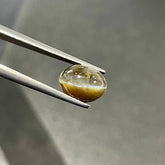
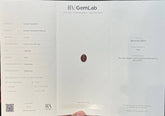
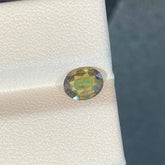
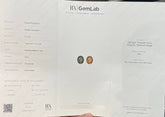
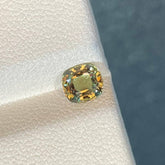
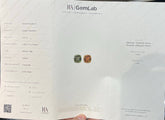
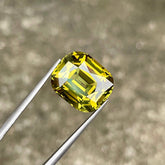
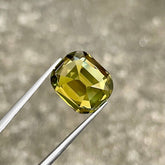
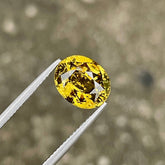
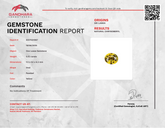
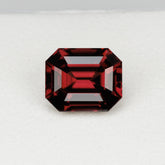

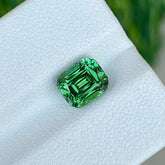

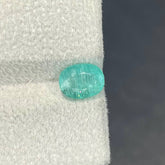

Leave a comment
Please note, comments need to be approved before they are published.